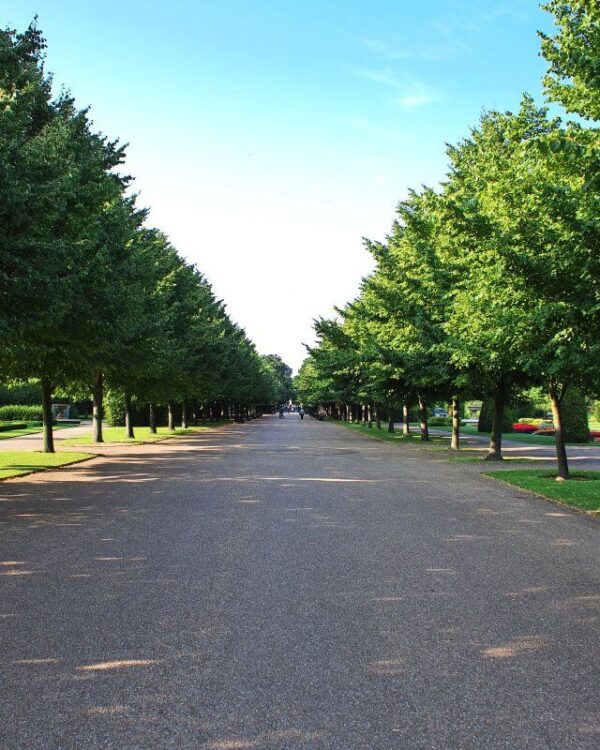Sainte Chapelle Basic Information
When most people think of Gothic architecture, they think of dark, dreary castles. However, the Gothic style was also used in some of the most beautiful religious buildings in Europe, including Sainte Chapelle in Paris. The Chapel was built within the Palais de la Cite, which was the royal residence in Paris during the 13th century, and it is one of the best-preserved examples of Gothic architecture in the world. The interior of the chapel is covered with stained-glass windows, which depict scenes from the Bible. In addition to being a beautiful work of art, the chapel is also a fascinating example of medieval history.
La Sainte-Chapelle History
The chapel was commissioned by Louis IX around 1240 and built to house his collection of relics, which he had acquired from Baldwin II, Latin Emperor of Constantinople, including Christ’s Crown of Thorns. The chapel was consecrated on 26 April 1248. The relics were moved to the new chapel from Venice, where they had previously been kept. The price for the relics were almost three times the cost of the chapel. The chapel is located within the royal palace on the Île de la Cité and is one of the most prominent examples of Rayonnant architecture.
Sainte Chapelle Holy Relics and the Reliquary
Some relics were destroyed during the Revolution, and the chapel was used as a warehouse. The relics were later moved to the Notre-Dame Cathedral until the 2019 fire, when they were moved to the Louvre Museum.
Sainte Chapelle Gothic A: Description
The Saint Chapel is noted for its beautiful windows, which depict scenes from the Old and New Testaments. The colors are so bright and the details so fine that it is said that one can see the individual hairs on Christ’s head. The glass was believed to be made in the workshop of Pierre de Montreuil, one of the most famous glassmakers of his day. However, modern scholars argue that it was actually someone else’s work.
Rose Windows
Each window is composed of hundreds of individual panels of glass, painstakingly cut and laid into place. The overall effect is breathtaking, and the windows have been lauded for their graceful beauty. In addition to their aesthetic value, the Rose Windows are a reminder of the religious faith of the medieval French kings who commissioned them, and they stand as testament to the skill of the artists who created them.
Sainte-Chapelle Magnificent Stained Glass Windows
The upper part of Sainte-Chapelle is much more impressive, connected to the royal apartments and intended for the exclusive use of the court. There are 15 windows from the 13th century with a total area of over 600 square meters. They are decorated with magnificent glass windows, each being almost 50 feet high. They depict scenes from the New and Old Testament. This is one of the most impressive collection of 13th-century stained glass in the world.
Sainte Chapelle Sculpture
Sainte Chapelle is best known for its incredible stained-glass windows, which date back to the 13th century. But the chapel also boasts a number of beautiful sculptures, many of which are located on the exterior walls. One of the most striking is the “Christ and the Last Judgement” which depicts Christ seated in judgement over the souls of the dead.
Another notable sculpture is “The creation of Eve from Adam’s rib”. Sadly, most of the sculptures were destroyed during the French Revolution, and the chapel needed restoration. The sculptures were recreated by Adolphe-Victor Geoffroy-Dechaume.
Similar Posts:
- La Conciergerie in Paris: Exploring the Former Courthouse and Prison Where Marie-Antoinette Was Sentenced
- All About Ile de la Cite: Exploring the Sights and Tourist Attractions of Île de la Cité de Paris
- Exploring Chateau de Vincennes near Paris: The Medieval Castle of Château de Vincennes and Its History
- Notre Dame de Paris: History and Significance of Notre Dame Cathedral, Known as “Our Lady of Paris”
- The Basilica of Saint Denis and the Royal Necropolis: Exploring the First Gothic Cathedral in Depth
- Métro de Paris: Paris Metro Lines, Ticket Prices and Metro Safety
- The Église Saint-Sulpice: Exploring the Saint Sulpice Church in Paris, Known for Its Organ and Eugène Delacroix Murals
- Domaine National du Palais Royal: A Former Royal Residence in Paris



